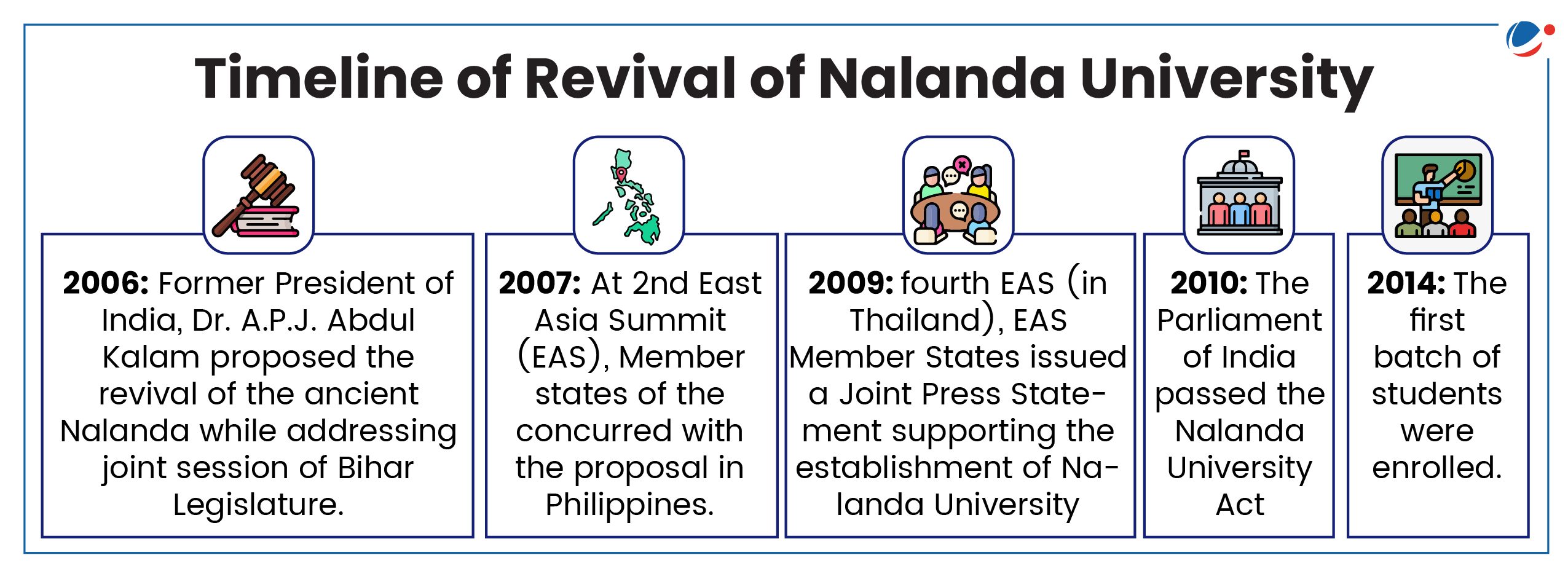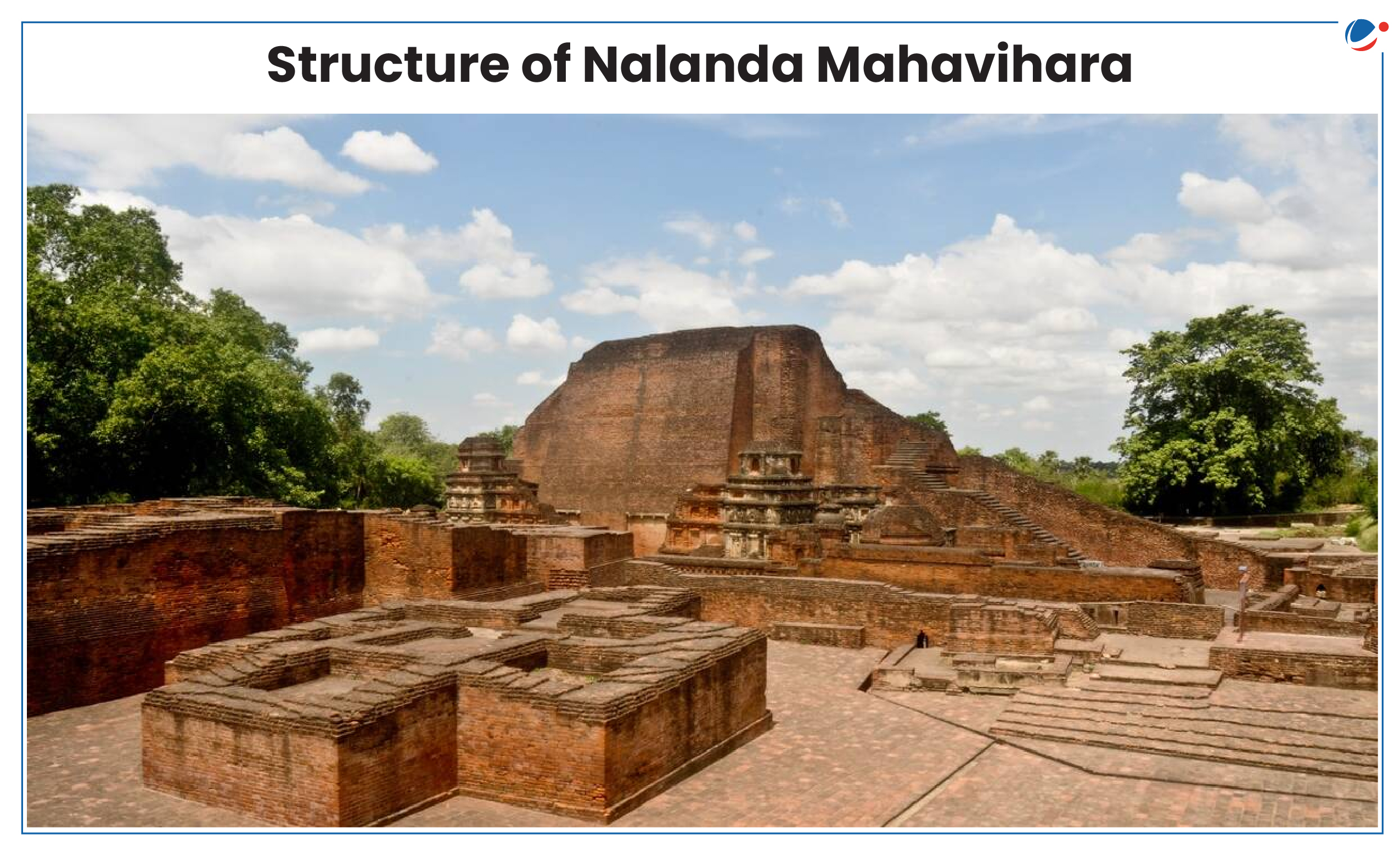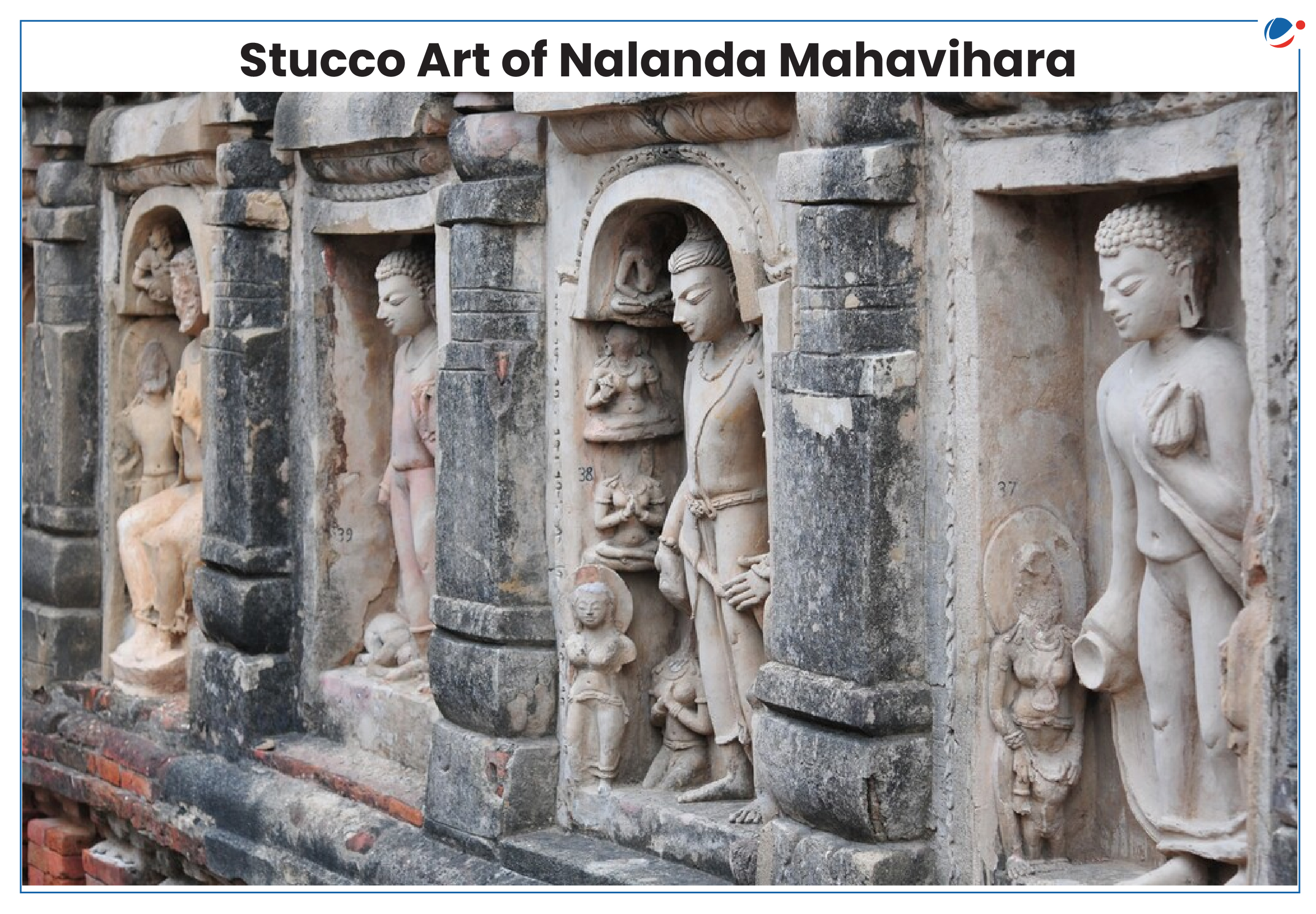Why in the News?
Recently, the Prime Minister inaugurated the new campus of Nalanda University in Rajgir (Bihar), which is envisaged as a center for inter-civilizational dialogue.
About Nalanda University
- Modern Nalanda University is a 'Net Zero Green Campus' featuring over 100 acres of water bodies known as Kamal Sagar ponds, an on-grid solar plant, and advanced water treatment facilities.
- It is located near the ancient Nalanda ruins.
- Bakhtiyar Khalji, a Turkish general serving under Qutbuddin Aibak, destroyed ancient Nalanda University it in 1205 AD.
- In the in the early 19th century, the site was discovered and reported by Sir Francis Buchanan.
- in 20th Century, subsequently systematic excavations were done by Archaeological Survey of India (ASI) which reignited interest in its revival.
- Along with India, the project involves 17 participating countries, including Australia, China, Singapore, and Vietnam.
About Ancient Nalanda University

- Oldest residential university in the world: Nalanda was founded by Kumargupta I of the Gupta dynasty in 5th century CE.
- Patrons: It was patronized by various rulers including King Harshavardhana of Kannauj (7th century CE), Pala rulers (8th – 12th century CE).
- It is said that King Asoka gave offerings to the Chaitya of Sariputra at Nalanda and erected a temple there.
- Important personalities
- According to Pali Buddhist literature, Nalanda was visited by Buddha.
- Sariputra and Moggallana, two of Buddha's chief disciples, hailed from the Nalanda region.
- According to Jaina texts Mahavira Vardhamana spent as many as fourteen rainy seasons in Nalanda.
- Prominent Teachers
- Aryabhatta: The renowned mathematician and inventor of zero, studied and taught at Nalanda.
- Nagarjuna: A Mahayana philosopher
- Dinnaga: Founder of the school of Logic
- Dharmpala: Brahmin scholar
- Abhayakaragupta: A renowned tantric practitioner was simultaneously abbot of the Mahabodhi, Nalanda and Vikramashila monasteries.
- Naropa: Belonged to the tantric lineages of the Tibetan traditions, and was abbot of Nalanda in the years 1049-57.
- Foreign travellers:
- Nalanda had attracted scholars from China, Korea, Japan, Tibet, Mongolia, Sri Lanka, and South East Asia.
- The Chinese scholars I-Qing and Xuan Zang visited Nalanda in the 7th century CE.
- Xuan Zang studied yogashastra at Nalanda under Chancellor Shilabhadra, the highest authority in yoga.
- Xuan Zang also carried back many hundred scriptures which were later translated into Chinese.
- Recognition: The ruins of Nalanda were declared as a UN World Heritage Site in 2016.
Academic Excellence and Curriculum of Nalanda
- University attracted scholars from different parts of world.
- Admission to the university was strictly by merit rigorous oral entry examination conducted by trained gatekeepers who rejected those who did not pass.
- However, no degree was granted nor was a specific period of study required.
- There were schools of study in which students received explanations by discourse, and there were also schools of debate.
- It earned the title of 'Medieval School of Discussion and Logic'.
- Vedas, all three Buddhist doctrines (Theravada, Mahayana, and Vajrayana), fine arts, medicine, mathematics, astronomy, politics, and the art of war were taught.
- The university's library, poetically named "Dharma Gunj" or "Mountain of Truth," housed over nine million books across nine floors.
Architectural Features of Nalanda

- Excavation Discoveries: Numerous stupas, monasteries, hostels, staircases, meditation halls, lecture halls, and other structures.
- Structure and Layout:
- Built in old Kushan architectural style, in a row of cells around a courtyard.
- It had axial planning and layout along north-south axis.
- Structural remains include Viharas (residential-cum-scholastic buildings) and Chaityas (temple-like structures).
- Unique features include the emergence and mainstreaming of chaityas with a quincunxial (five-fold) form, replacing the traditionally dominant stupa and influencing regional Buddhist temples.
- Architectural Significance:
- Nalanda is recognized as the earliest planned university in the Indian subcontinent.
- Its art shows thematic and iconographic assimilation of features from major art centers of the subcontinent with local practices.
- Nalanda's stucco influenced Thai practices, while its metal art influenced the Malayan archipelago, Nepal, Myanmar, and Tibet through scholars.
- Its stucco, stone and metal art retain iconographic features that enabled changes in Buddhist belief system and transition of Mahayana to Vajrayana.
Sculptural Art of Nalanda Mahavihara

- Origins: The sculptural art of Nalanda, crafted in stucco, stone, and bronze, evolved from the Buddhist Gupta art of Sarnath.
- Depictions of crowned Buddhas occur commonly only after the tenth century.
- Synthesis: By the ninth century, a blend of the Sarnath Gupta idiom, local Bihar traditions, and Central Indian styles led to the distinctive Nalanda school of sculpture.
- Various brahmanical images not conforming to the Sarnath style have also been found at Nalanda.
Nalanda school of sculpture
- Stone
- Characterised by distinctive facial features, body forms and treatment of clothing and jewellery.
- Precisely executed sculptures have an ordered appearance with little effect of crowding.
- Sculptures are also usually not flat in relief but are depicted in three-dimensional forms.
- The back slabs of the sculptures are detailed and the ornamentations delicate.
- Metal
- Time period: The Nalanda bronzes, dating between the seventh and eighth centuries to approximately the twelfth constitute a large body of Pala Period metal sculptures.
- Synthesis: Like their stone counterparts, the bronzes initially relied heavily on Sarnath and Mathura Gupta traditions.
- Early Phase: The Nalanda sculptures initially depict Buddhist deities of the Mahayana pantheon such as standing Buddhas, bodhisattvas such as Manjusri Kumara, Avalokiteshvara seated on a lotus and Naga-Nagarjuna.
- Later Phases: During the late eleventh and twelveth centuries, when Nalanda emerged as an important tantric centre, the repertoire came to be dominated by Vajrayana deities such as Vajrasharada (a form of Saraswati) Khasarpana, Avalokiteshvara, etc.
Conclusion
Nalanda is an icon of the Asian renaissance in the 21st century. It should be the center of civilizational dialogue and inter-faith understanding, as it once was." This vision of Nalanda as a bridge between cultures and faiths is more relevant than ever in our interconnected yet often divided world.
Other Buddhist Centres of Learning
Takshila |
|
Vikramshila |
|
Odantipuri |
|
Nagarjunakonda |
|
Others |
|



